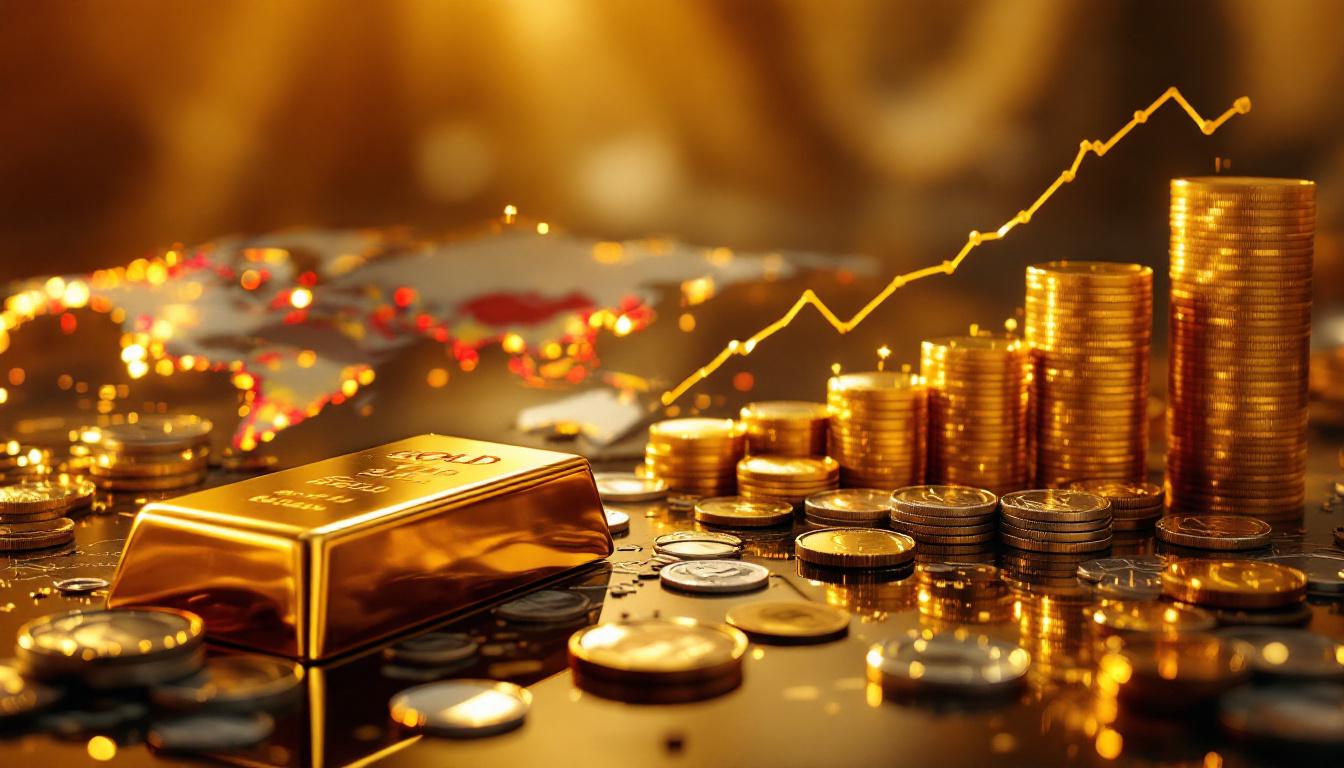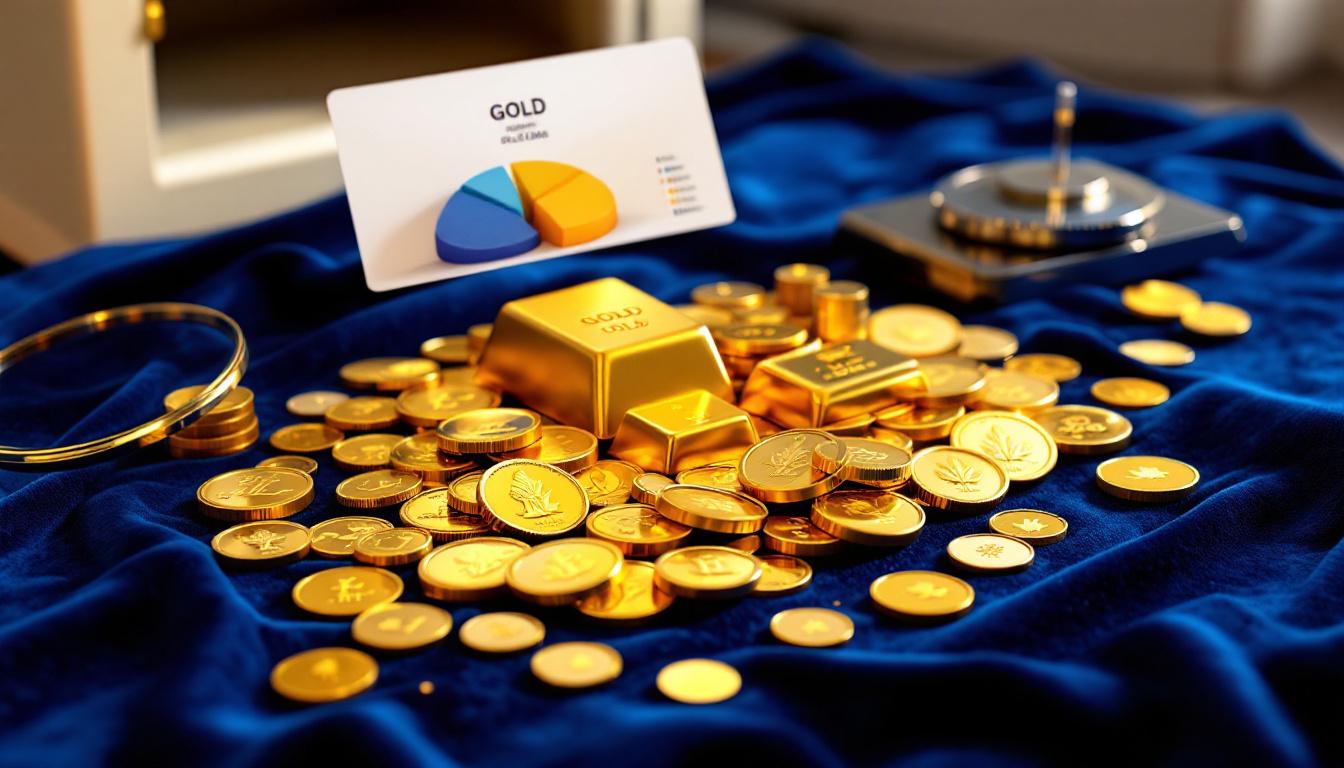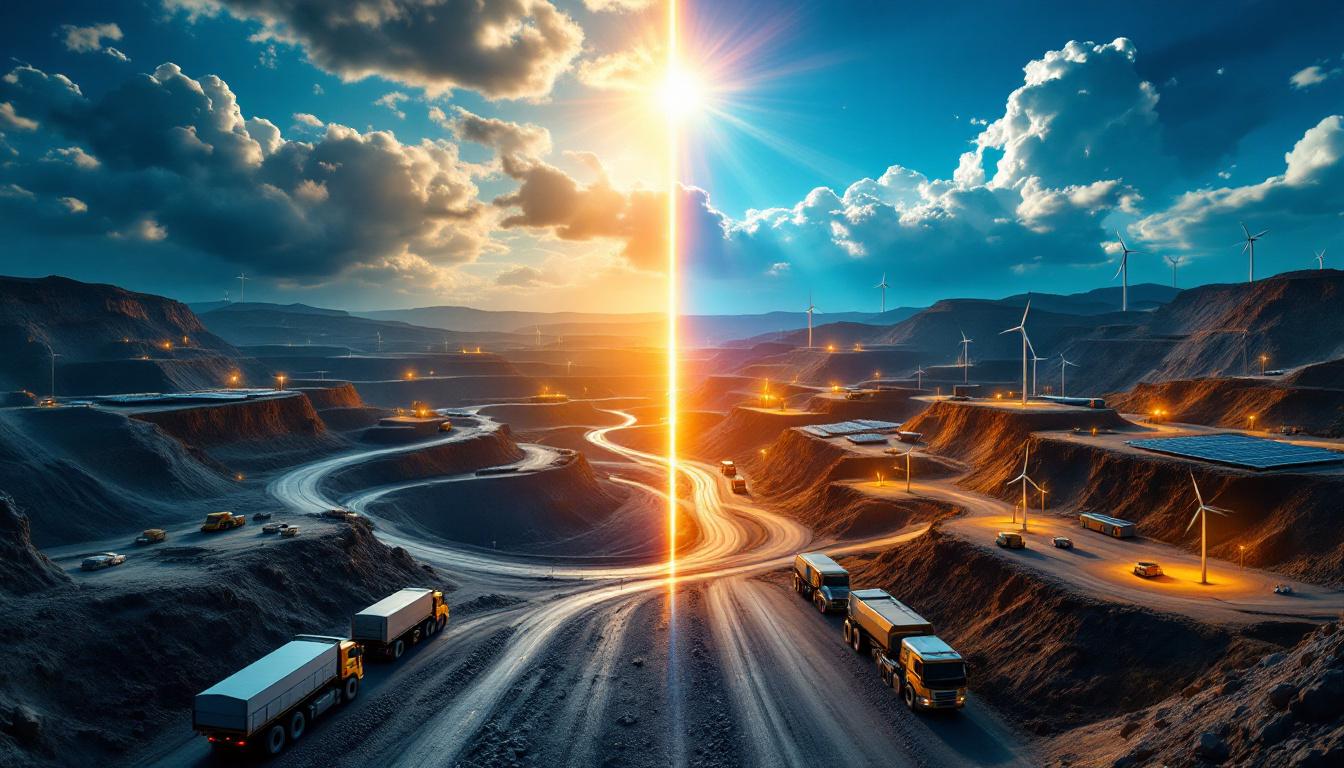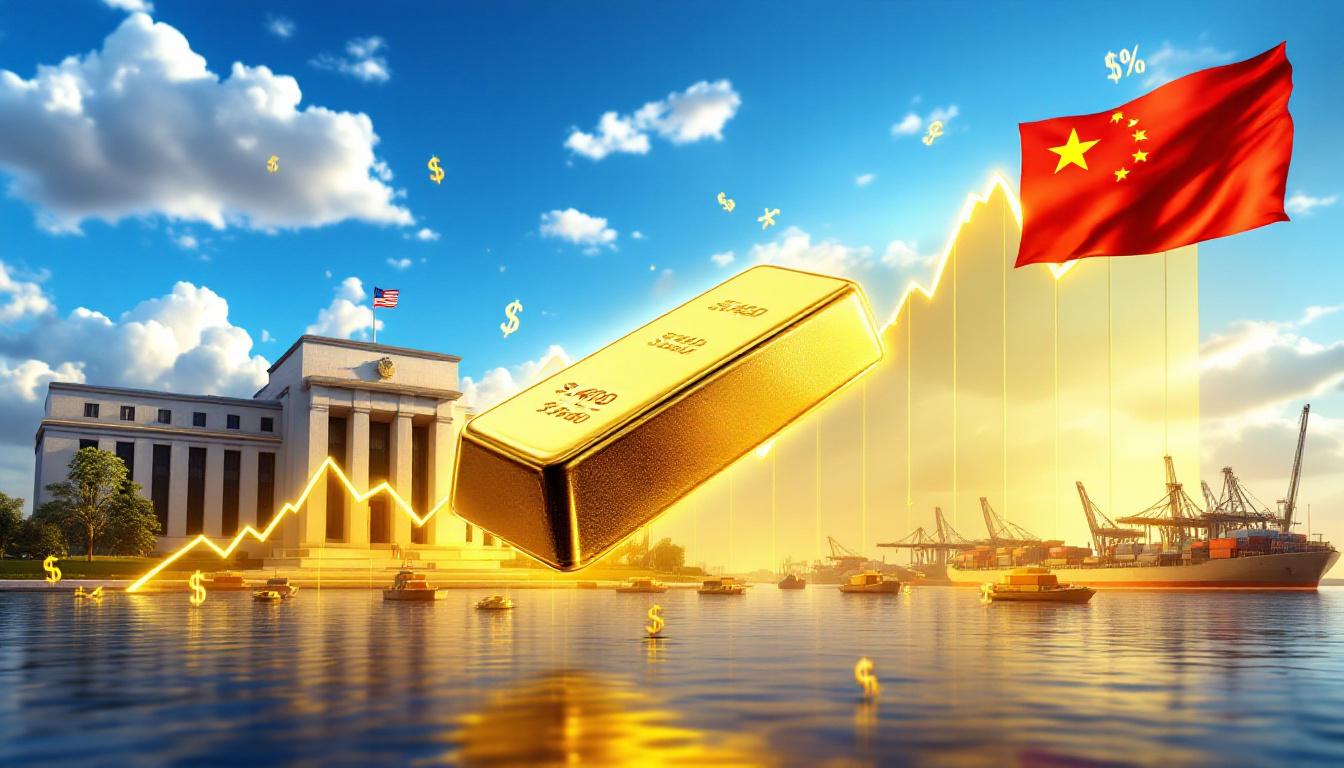What is Driving US Interest in Russian Rare Earth Projects?
Russia's position as the world's fifth-largest holder of rare earth reserves has attracted initial interest from US companies seeking to secure access to these critical materials. This growing interest in Russian rare earth projects comes amid global competition for resources essential to advanced technology and defense applications.
According to industry analysts, the US interest marks a significant shift in resource acquisition strategy, with American companies looking beyond traditional partners to diversify their supply chains. This move reflects growing concerns about China's dominance in the rare earth market, which currently controls approximately 85% of global processing capacity.
"The geopolitical landscape is forcing a complete rethinking of critical mineral supply chains," notes Dr. Elena Petrov, mineral resources analyst at the Global Resources Institute. "American companies are now exploring previously untapped partnerships, including those with Russia, despite political tensions."
The Strategic Value of Russian Rare Earth Metals
Russia's Rare Earth Resource Potential
Russia holds an estimated 3.8 million metric tons of rare earth reserves according to the US Geological Survey, though Russian government estimates suggest the actual figure could be closer to 12 million tons when including unconfirmed deposits in the Far East region.
The Tomtor deposit in Yakutia stands as Russia's crown jewel of rare earth elements, containing exceptionally high-grade ore with 10-12% rare earth oxide content—significantly higher than the global average of 1-3%. This deposit alone contains an estimated 154 million tons of ore with rare earth oxides.
Russia ranks as the world's fifth-largest holder of rare earth metal reserves, behind China, Vietnam, Brazil, and India. What makes Russian deposits particularly valuable is their comprehensive mineral profile, containing all 17 metals classified as rare earth elements, including the highly sought-after heavy rare earths like dysprosium and terbium.
Recent geological surveys have identified promising deposits in the Kola Peninsula, with preliminary assessments suggesting these may contain significant concentrations of neodymium and praseodymium—critical elements for permanent magnets used in electric vehicle motors.
Applications and Strategic Importance
Rare earth metals are essential for manufacturing magnets used in electric vehicles, with each typical EV requiring approximately 1-2 kg of rare earth elements. The demand for these materials is projected to increase by 300-500% by 2040 as mining's crucial and paradoxical role in the clean energy transition accelerates globally.
These elements are crucial components in cell phones and consumer electronics, with each smartphone containing about 0.15 grams of rare earth elements. Military applications include missile guidance systems, radar technology, and night vision devices, with defense hardware accounting for approximately 5-10% of total rare earth consumption.
No known substitutes exist for rare earth metals in many critical applications, particularly in high-performance permanent magnets where alternatives would result in significant performance reductions of 30-40%.
"The lack of viable substitutes makes these resources strategically irreplaceable," explains mining engineer Viktor Mikhailov. "Countries that control rare earth supply chains effectively control the future of technology manufacturing."
How Are Geopolitical Factors Influencing Resource Cooperation?
The potential for US-Russian cooperation on rare earth projects is emerging against a complex backdrop of international relations and ongoing conflicts. This development represents a pragmatic approach to resource security that potentially transcends political differences.
Industry insiders suggest that informal discussions between US mining executives and Russian officials began as early as late 2022, well before public acknowledgment of these connections. The discussions reportedly focus on potential joint ventures that would navigate the critical minerals race through carefully structured financial arrangements.
The Ukraine Conflict Connection
Minerals as Part of Peace Negotiations
Resource agreements have emerged as a key element in Trump's efforts to end the Ukraine war, with rare earth elements featuring prominently in these discussions. The concept of "resource diplomacy" has gained traction among certain policy circles as an alternative approach to traditional peace negotiations.
Discussions about mineral extraction are being considered alongside broader peace initiatives, with some analysts suggesting that economic incentives may prove more effective than purely political solutions. Moscow has signaled openness to resource deals as part of diplomatic engagement, viewing minerals cooperation as a potential pathway to sanctions relief.
Potential cooperation on rare earths represents an economic dimension to conflict resolution, with proponents arguing that shared commercial interests could create stakeholder value in maintaining stability. According to diplomatic sources, preliminary frameworks for mineral cooperation have been drafted but remain highly confidential.
"Resource agreements have historically provided durable foundations for peace when properly structured," notes Dr. Sergei Ivanov, international relations expert specializing in resource politics. "The challenge lies in creating arrangements that deliver mutual benefits while addressing legitimate security concerns."
Diplomatic Timeline and Next Steps
Further discussions may occur at Russia-US talks expected in mid-April in Saudi Arabia, where industrial participation is expected to include representatives from major mining corporations and technology manufacturers seeking stable supply chains.
No formal documents have been signed between US companies and Russian entities, though memoranda of understanding are reportedly being prepared that would outline potential cooperation models while acknowledging regulatory constraints.
Initial interest represents early-stage engagement rather than finalized agreements, with significant legal and political hurdles remaining before substantive cooperation could begin. Kirill Dmitriev, Putin's investment envoy, confirmed talks with American firms have begun, describing them as "preliminary but promising discussions about mutually beneficial arrangements."
Geological assessment teams are preparing for potential joint survey work in Q3 2023, pending regulatory approvals and security arrangements.
What Challenges Face Potential US-Russian Rare Earth Cooperation?
Despite mutual interest, significant obstacles remain before meaningful cooperation can be established between American companies and Russian rare earth projects. Industry experts point to a complex web of legal, technical, and political barriers that must be overcome.
The mineral processing capabilities represent a particularly challenging bottleneck, as Russia currently lacks sufficient capacity to process high volumes of rare earth concentrates to the purity levels required for high-technology applications (99.9%+).
Sanctions and Regulatory Hurdles
Current Limitations on Cooperation
Kremlin spokesman Dmitry Peskov cited sanctions-related restrictions as preventing formal agreements, specifically noting that "the current regulatory environment makes formal partnerships difficult, though not impossible if structured correctly."
Existing sanctions limit US companies' ability to invest in Russian resource projects, particularly those involving entities on specialized sanctions lists or with connections to the defense sector. Under OFAC regulations, American firms face potential penalties of up to $1 million per violation.
Regulatory frameworks in both countries present compliance challenges, with American companies subject to Committee on Foreign Investment in the United States (CFIUS) review for strategic materials investments. Political sensitivities surround resource cooperation amid broader tensions, with lawmakers in both countries expressing skepticism about cross-border rare earth ventures.
"The regulatory maze is deliberately complex," explains international trade attorney Mikhail Petrov. "Companies seeking to navigate these waters need sophisticated legal structures that remain compliant while enabling meaningful business cooperation."
Economic Considerations
Projects would need to be structured as "mutually beneficial" according to Peskov, potentially involving technology transfer and processing investments alongside extraction rights. Long-term investment requirements for rare earth development are substantial, with typical projects requiring $500 million to $1 billion in capital expenditure before reaching production.
Processing technology and expertise requirements add complexity to potential deals, as rare earth separation involves hundreds of extraction stages to achieve required purity levels. Market access and supply chain integration present additional challenges, including the need for specialized logistics solutions for transporting radioactive by-products associated with rare earth mining.
Feasibility studies indicate that establishing a fully integrated rare earth supply chain would require 5-7 years from initial agreement to full production, requiring patience from investors and policymakers alike.
FAQ: US Interest in Russian Rare Earth Projects
What exactly are rare earth metals?
Rare earth metals comprise a group of 17 elements used to create magnets that convert power into motion for various applications including electric vehicles, electronics, and defense systems. Despite their name, these elements are relatively abundant but rarely found in concentrated deposits that make extraction economically viable.
The group includes 15 lanthanides (elements with atomic numbers 57-71) plus scandium and yttrium. They're typically categorized as "light rare earths" (lanthanum through gadolinium) and "heavy rare earths" (terbium through lutetium plus yttrium), with heavy rare earths generally being scarcer and more valuable.
When mining engineers refer to "high-grade" rare earth deposits, they typically mean concentrations above 4% total rare earth oxides (TREO), which is considered exceptional in the industry. Russian deposits at Tomtor reach up to 12% TREO in certain zones.
Why are rare earth metals strategically important?
These elements are critical components in high-technology applications including renewable energy systems, advanced electronics, and military hardware. Countries that control rare earth supplies gain strategic advantages in manufacturing and defense capabilities, especially as demand increases with technological advancement.
The unique electronic configurations of rare earth elements create irreplaceable magnetic, luminescent, and catalytic properties. For example, neodymium-iron-boron magnets are up to 1,000 times stronger than conventional ferrite magnets, enabling miniaturization of countless technologies.
In defense applications, samarium-cobalt magnets continue functioning at extreme temperatures up to 550°C, making them essential for precision-guided munitions and radar systems. This capability cannot be replicated with substitute materials, creating true strategic dependency.
How significant are Russia's rare earth reserves compared to other countries?
Russia ranks fifth globally in rare earth reserves according to the US Geological Survey, with an estimated 3.8 million metric tons. However, Russian government assessments claim significantly larger reserves of potentially 12+ million tons when including probable resources. China currently dominates global production, making alternative sources increasingly important for supply chain diversification.
What distinguishes Russian deposits is their exceptional mineral grade and comprehensive rare earth profile. The country's deposits contain both light and heavy rare earths, with some Siberian formations showing unusually high concentrations of dysprosium and terbium—elements particularly critical for high-temperature applications.
Geological assessments indicate that Russian rare earth deposits tend to be associated with alkaline igneous complexes, which typically yield more favorable metallurgical properties than ion-adsorption clay deposits found in southern China. Further insights about global reserves can be found in analyses of global rare earth reserves and key players.
What companies are showing interest in Russian rare earth projects?
While specific US companies have not been publicly identified, Kremlin says US companies have shown initial interest in rare earth projects. Putin's investment envoy Kirill Dmitriev also stated that talks with American firms have already begun, though no further details were provided about which companies are involved.
Industry analysts speculate that mid-tier specialty mineral companies rather than major mining conglomerates are likely leading these discussions, as they have greater flexibility to pursue unconventional resource partnerships. Specialized rare earth processors with expertise in separation technology would be particularly valuable partners for developing Russia's resources.
Investment structures being considered reportedly include technology-for-access swaps, where American processing expertise would be exchanged for guaranteed mineral supply allocations rather than direct equity investments that might trigger sanctions violations. This approach mirrors recent developments where the Australian government's $400 million boost to Iluka's rare earth refinery demonstrates how national interests are reshaping global rare earth investments alongside how Trump's policies are reshaping global commodity markets.
Want to Stay Ahead of Market-Moving Mineral Discoveries?
Discover how real-time alerts on significant ASX mineral discoveries could transform your investment strategy by visiting Discovery Alert's discoveries page. Powered by the proprietary Discovery IQ model, these instant notifications provide actionable insights that could position you ahead of the market when the next major mineral discovery is announced.




